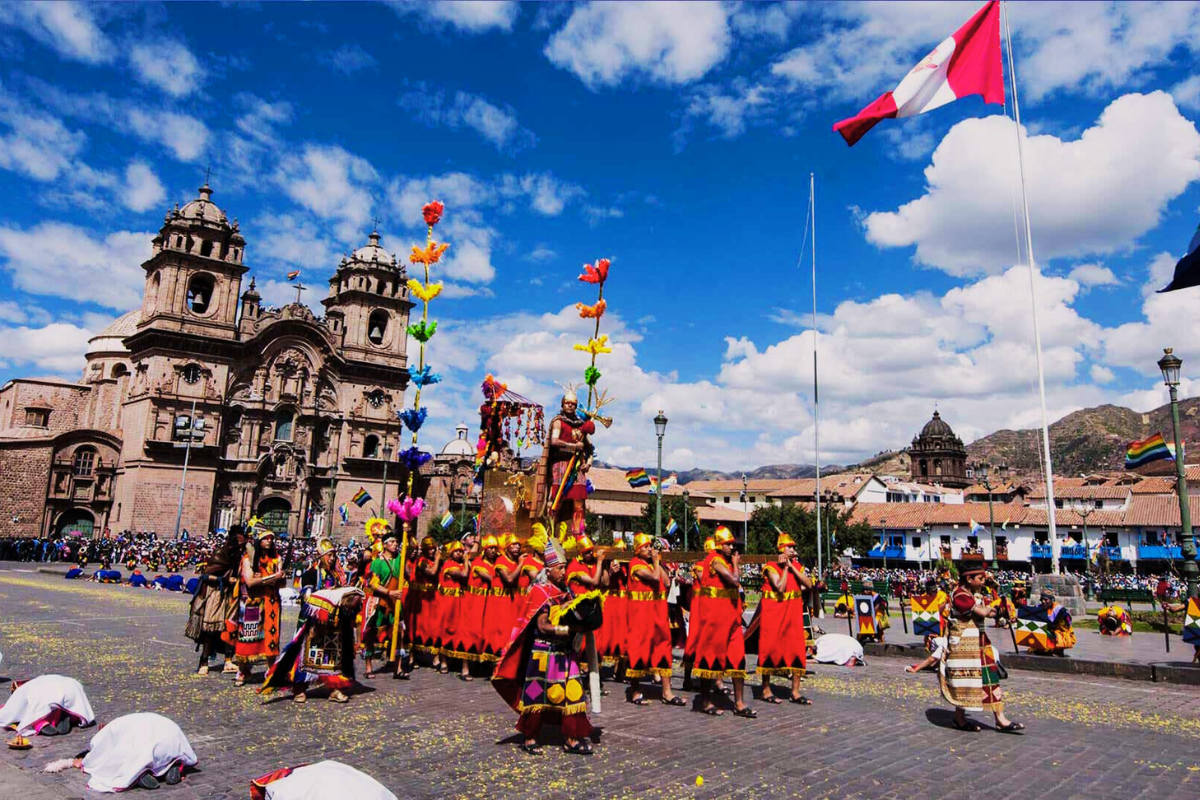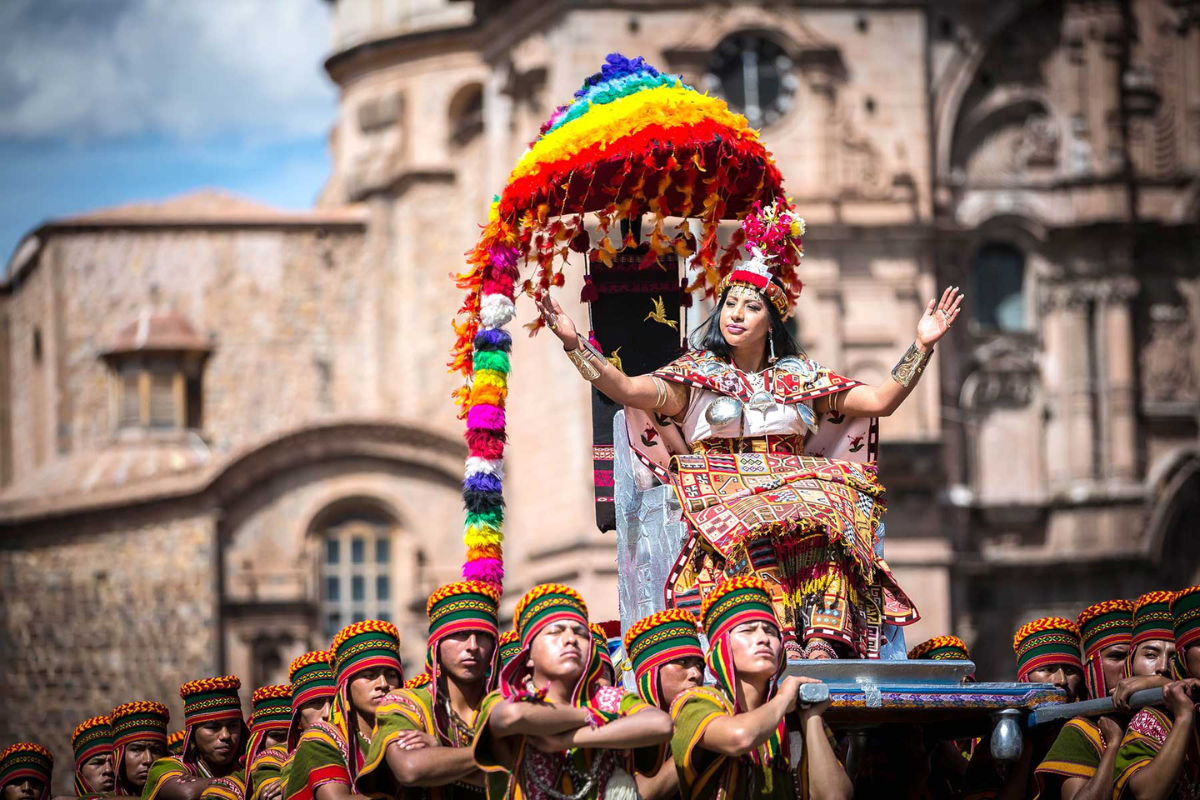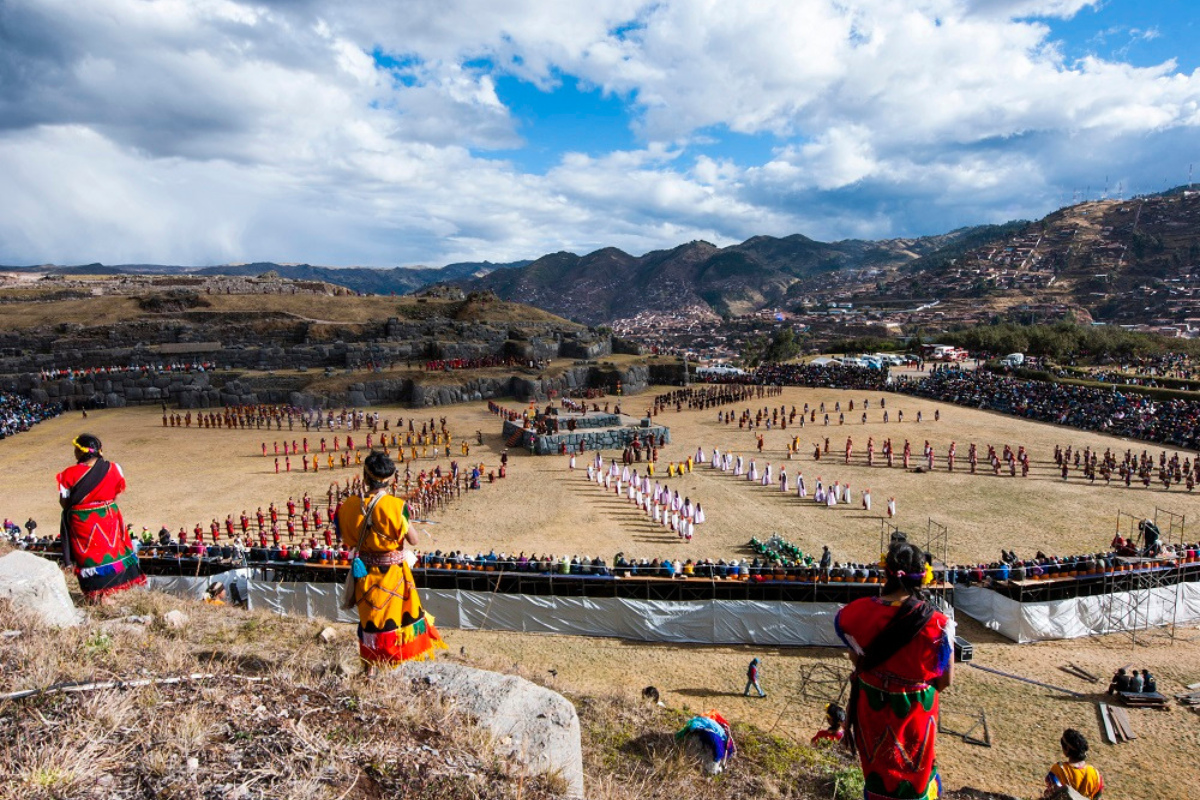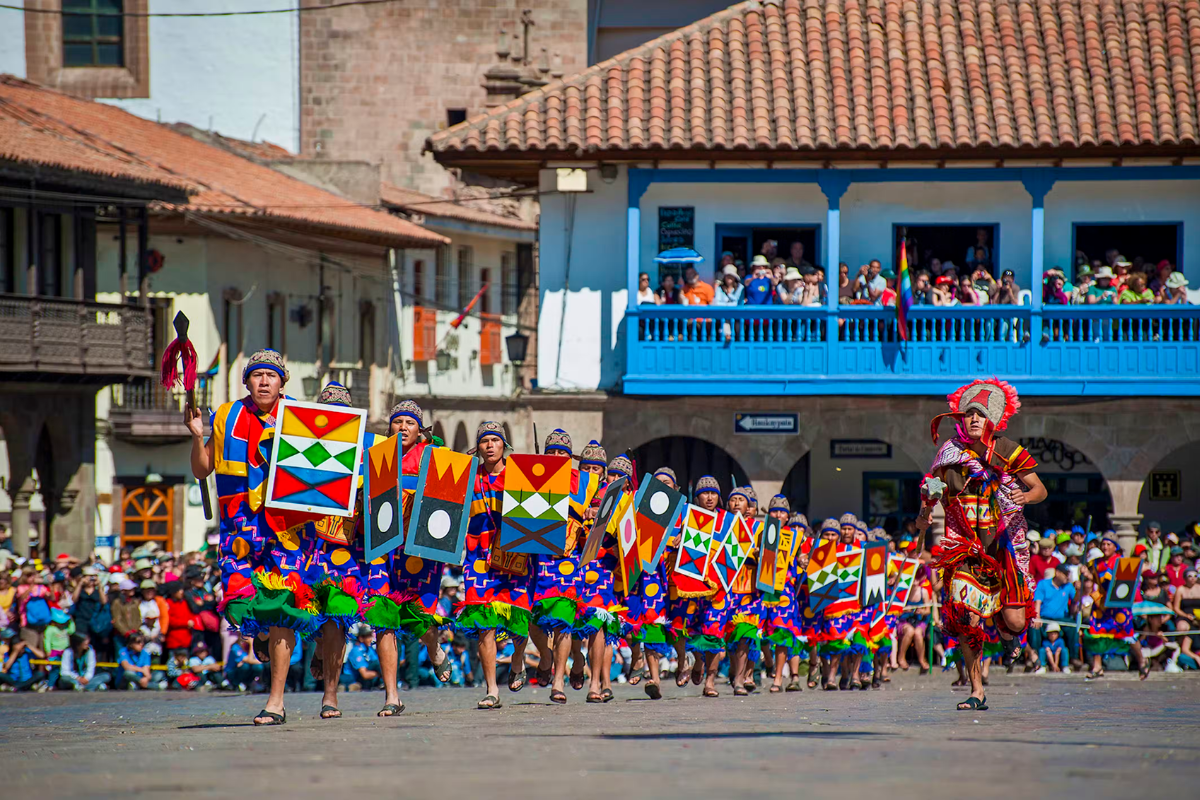High above the mist-shrouded valleys of Machu Picchu, flames cast shimmering shadows on ancient stone. Incense fills the air, the rhythmic beat of drums echoes across the ruins, and a thousand voices rise in joyous song. It is Inti Raymi, the Festival of the Sun, a vibrant tapestry woven from the threads of history, faith, and resilience.

Photo: Peru Travel
High atop the ancient city of Machu Picchu, where the Andes pierce the sky and clouds dance with the sun, a spectacle unfolds each June. Clad in shimmering gold, the Inca Sapa, or Emperor, raises his hands towards the heavens, igniting a sacred fire that bathes the ruins in an orange glow. This is Inti Raymi, the Festival of the Sun, a vibrant tapestry woven from the threads of history, tradition, and the enduring spirit of the Inca people.
Born in the heart of the Inca Empire, where the sun god Inti reigned supreme, Inti Raymi marked the winter solstice, a time of both darkness and rebirth. As the sun dipped towards its southernmost point, fear of diminishing harvests gripped the land. But with Inti Raymi, hope was rekindled. Elaborate rituals, vibrant dances, and heartfelt offerings appeased Inti, ensuring his return and ushering in a season of abundance.
However, the sun’s light dimmed on the Inca Empire centuries ago. Spanish conquistadors brought their own gods and suppressed the vibrant traditions of their conquered subjects. Yet, like a phoenix rising from the ashes, Inti Raymi has reemerged in modern-day Machu Picchu, a testament to resilience and the enduring power of cultural memory.
From empire to ashes: The sun’s embrace and the fall of the Inca

Photo: Andina
Born in the 15th century under the visionary reign of Inca Pachacutec, Inti Raymi transcended mere celebration. It was a meticulously orchestrated expression of gratitude and supplication to Inti, the life-giving sun god who held the fate of the Inca Empire in his golden rays.
Weeks before the festival, meticulous preparations unfolded. Virgins fasted and wove intricate tapestries for Inti’s temples. Priests meticulously selected sacrifices – the purest llamas – to be offered alongside golden ornaments and the finest crops. The air crackled with anticipation as the festival approached, culminating in a grand spectacle that showcased the might and devotion of the Inca Empire.
However, the sun’s light dimmed on the Inca Empire in the 16th century. Spanish conquistadors, wielding their own gods and ambitions, suppressed the vibrant traditions of their conquered subjects. Inti Raymi, once a vibrant expression of faith, was deemed pagan and relegated to the shadows of history.
Yet, even in the face of suppression, the embers of Inti Raymi never truly died. Today, the festival has reemerged in Machu Picchu, a vibrant tapestry woven from memory and devotion. The heart of the celebration beats at Qorikancha, the Sun Temple, where a ceremonial fire ignites, symbolizing the sun’s rebirth. The Sapa Inca, adorned in resplendent gold, raises his hands towards the heavens, his voice resonating with ancient prayers.
The procession then winds its way through the stone-paved streets, a sea of vibrant colors and rhythmic chants. Priests, warriors, and commoners alike join the Sapa Inca, their steps echoing the ancient pilgrimage to Sacsayhuaman, the ceremonial fortress overlooking Machu Picchu. Here, the symbolic sacrifice of a llama, a representation of the Inca people’s offerings, takes place, accompanied by prayers and invocations to Inti.

Photo: LATA
Each ritual, each dance, and each note carries the weight of history and mythology. The procession echoes the annual pilgrimage of the Sapa Inca to the Sun Temple in Cusco. The llama sacrifice recalls the Inca belief in reciprocity with nature, offering their most prized possession to appease Inti. The dances represent celestial bodies and natural forces, weaving a complex narrative of the Inca worldview.
From shadows to spectacle: The evolution of Inti Raymi in a modern world
The revival of Inti Raymi in the 20th century was more than just a cultural revival. It was a reclamation of identity. Suppressed for centuries, the festival served as a powerful symbol of resilience, reminding the Quechua people of their rich heritage. Today, it stands as a testament to their enduring spirit and their commitment to preserving their cultural legacy.
However, the modern-day celebration of Inti Raymi is not without its challenges. The festival has become a major tourist attraction, attracting thousands of visitors eager to witness its spectacle. While tourism brings much-needed economic benefits, it also raises concerns about cultural appropriation and the commodification of tradition. Striking a balance between preserving the authenticity of the festival and catering to the needs of tourism remains a delicate dance.
Despite the challenges, the heart of Inti Raymi remains vibrant. Local communities play an active role in organizing and participating in the festival, ensuring its cultural integrity. The festival serves as a platform for cultural exchange, fostering understanding and appreciation for the rich tapestry of Inca traditions.

Photo: Lonely Planet
Inti Raymi’s legacy transcends the festive spectacle. It serves as a powerful symbol of Inca resilience, a testament to a culture that refused to be extinguished. The festival fosters cultural understanding, reminding us of the interconnectedness of humanity and the natural world. It also highlights the importance of cultural preservation, urging us to safeguard the voices and traditions of the past.
However, the environmental and social impacts of the festival cannot be ignored. The influx of tourists can strain resources and disrupt the delicate ecosystem of Machu Picchu. Balancing cultural preservation with tourism requires careful planning and responsible practices.
Ultimately, Inti Raymi is a vibrant tapestry woven from threads of history, tradition, and hope. It offers a glimpse into the heart of the Inca Empire, reminding us of the enduring power of cultural memory and the importance of respecting the delicate balance between humanity and nature. As the sun sets on the festival, casting long shadows over the ancient ruins, it leaves behind a lingering warmth, a reminder that even in darkness, the light of hope and cultural resilience can always be rekindled.

